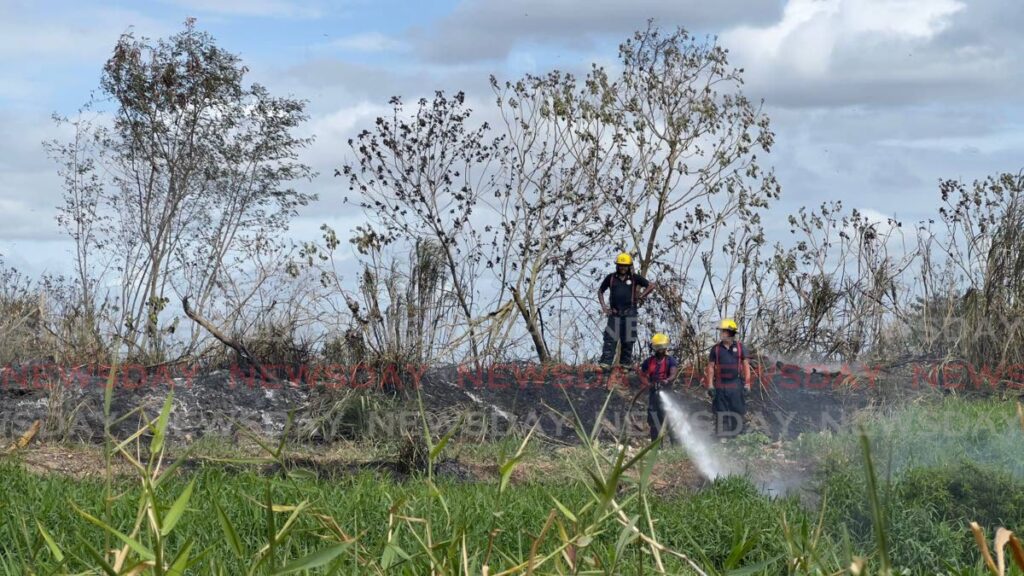News
Rishard Khan
2 Days Ago

BUSHFIRES are almost synonymous with the dry season but apart from posing a threat to property and lives, they can displace animals, bringing them closer to human populations.
Data from the TT Fire Service shows there were at least 27,920 bushfires reported in the country between 2013 and 2023. This makes an average of 2,792 fires annually but considering they typically occur during the six-month dry season, that leaves an average of 465 fires each month.
Already for the first month of the year, there were 119 fires, while the figure for February is still being tallied.
Overall there were 2,653 fires in 2023, 1,587 in 2022, 1,087 in 2021 and a staggering 3,826 in 2019, according to data from the Fire Service.
District Fire Officer of Fire Prevention Lalchan Arjoon said bushfires occur more frequently during March, April and May which is typically the peak of the dry season.
Arjoon said a significant number of bushfires in TT are caused by humans, from throwing a lit cigarette butt out of a vehicle, a piece of glass litter focusing the sun on dry grass or farmers clearing land inappropriately.
He warned that during the dry season lighting fires outdoors is an offence under the Agricultural Fires Act. If a person wishes to do so, they need to apply for a permit through the Fire Service and adhere to strict guidelines. In 2018, the fine for illegal lighting of a fire was raised from $1,500 to $20,000.
A Ministry of Agriculture, Land and Fisheries release on March 2 said in addition to killing wildlife, smoke and smog can also disorient animals. It said this can cause them to flee to nearby residential and commercial zones.
“The effects of wildfires can extend beyond the immediate event. Surviving animals may suffer injuries and find themselves without a habitat. Even those not physically harmed may face challenges due to the loss of their food sources, leading them to search for alternatives and potentially bringing them into contact with human settlements, increasing vulnerability to new predators and hazards such as vehicle collisions. During disasters like wildfires, it is not uncommon to observe wildlife in unexpected locations, including residential and commercial areas, as they scatter in search of resources and refuge.”
Bushfires, climate change and urbanisation can bring animal and human populations closer, either on their own or in unison, according to UWI’s Prof of Veterinary Virology Christopher Oura and lecturer of veterinary pathology Dr Rod Suepaul. They said bushfires not only disrupt ecosystems but also pose a public health risk.
“Once they (the animals) have any diseases, it will bring that disease closer to humans. It depends on where humans live and we have some zoonotic diseases that can be transferred,” Suepaul said.
The World Health Organization (WHO) estimates there are around 200 such (zoonotic) diseases which can be transmitted to humans.
Oura said in TT there are diseases like yellow fever carried by howler monkeys, rabies carried by bats, Chagas disease carried by some insects and dengue fever which is carried by mosquitoes.
Oura and Suepaul advise the public if they come across a wild animal on their property to refrain from trying to capture it themselves. The primary agency responsible for such events is the Wildlife Section of the Ministry of Agriculture, Land and Fisheries’ Forestry Division which can be contacted at 225-3835.
